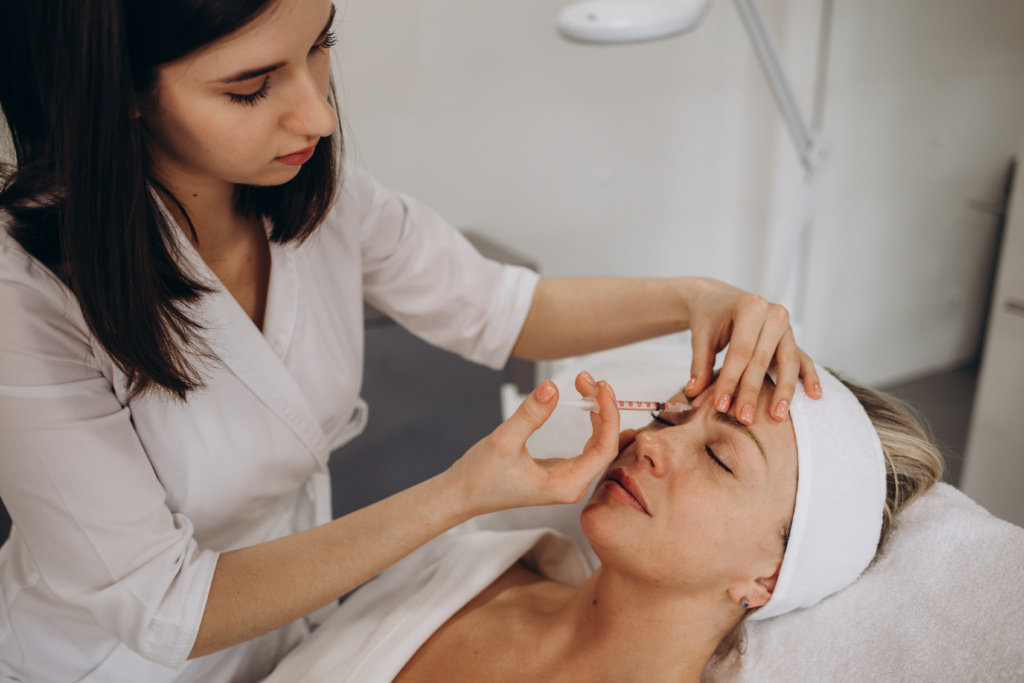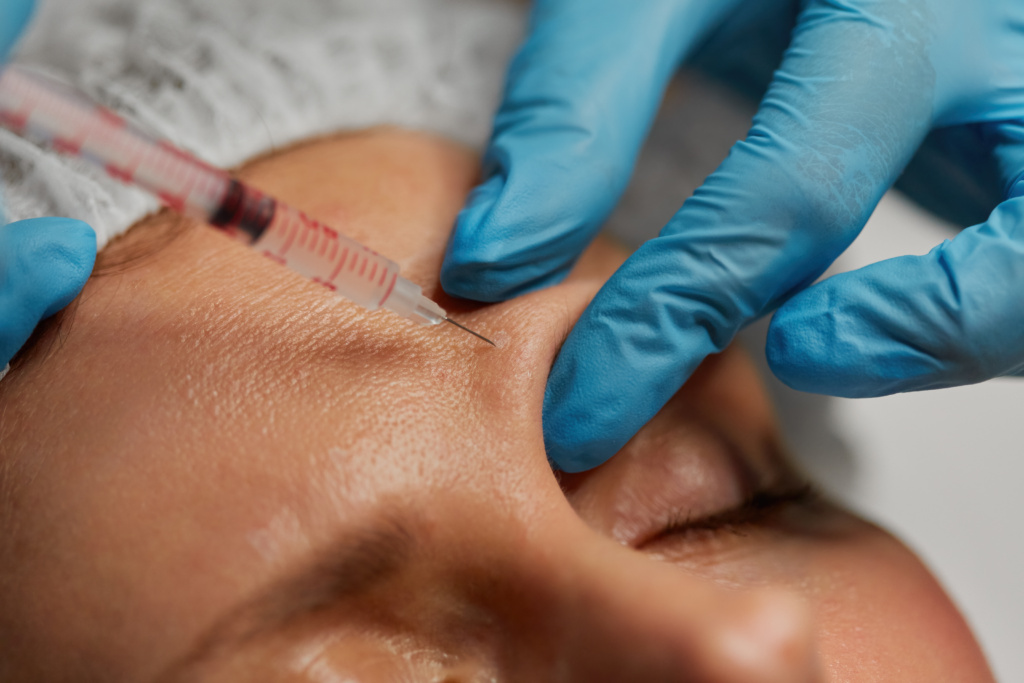Modern anti-ageing injections have transformed how skin rejuvenation is approached. For healthcare professionals working in aesthetics, understanding the basics of how these treatments work and how to deliver them safely is key to great results and long-term patient trust.
This article explains what causes visible signs of ageing, understanding how different injection products work, practical safety tips, and how to build results that last.
Why Skin Ages and How Injectables Help
Ageing is a natural process influenced by genetics and lifestyle factors like sun exposure, stress, and diet. As people get older, their skin loses collagen, elastin, and hyaluronic acid. This leads to fine lines, deeper wrinkles, and sagging in areas that once looked full and firm.
Anti-ageing injections can help by targeting these changes:
- They relax overactive muscles that create expression lines.
- They restore lost volume and hydration.
- They encourage the skin to renew itself by boosting collagen production.
When performed skillfully, these treatments can create subtle, natural-looking results. Patients can feel more confident without looking “overdone”.

Key Types of Anti-Ageing Injections
Choosing the right injection product depends on each patient’s goals, skin concerns, and treatment area. A thorough consultation is performed by the cosmetic practitioner to identify if the patient is suitable or not for treatment.
Here are the main categories every cosmetic injector should know.
Neuromodulators (Botulinum Toxin)
Botulinum toxin injections are the most well-known anti-wrinkle treatments. They temporarily block signals from nerves to specific muscles, stopping them from contracting too strongly. This softens lines caused by repetitive facial movements, like frowning, squinting, or smiling.
Common areas treated include forehead lines (frontalis), frown lines (glabella) between the eyebrows, and crow’s feet (periorbital) around the eyes.
Onset of effect generally develops within several days following treatment and typically lasts for several months, after which muscle activity gradually resumes. Repeat treatments are often scheduled to maintain the desired outcomes.
Results, recovery time, and potential risks can vary from person to person.
Hyaluronic Acid (HA) Fillers
Hyaluronic acid is naturally found in the skin. It helps keep skin hydrated, firm, and volumised. As we age, our HA levels drop, leading to dryness and volume loss.
HA fillers are versatile and can:
- Address deep lines and folds, like smile lines
- Restore lost volume in areas such as cheeks and lips
- Support facial contours, such as the jawline
HA fillers attract water to the treated area, adding volume and moisture. Different products have different consistencies; softer filler products are suitable for fine lines and delicate areas, while firmer fillers are used to provide structure to areas like the jawline or chin.
Biostimulatory Fillers
Biostimulatory fillers go beyond restoring volume. They work by encouraging the body to produce its own collagen over time. This strengthens the skin’s structural integrity and can provide longer-lasting improvements.
Commonly used biostimulatory fillers include calcium hydroxylapatite and poly-L-lactic acid. They’re often used for areas that need more support, indications such as the cheeks, temples, or jawline. Results appear gradually as the body builds new collagen, patients should be informed that results are not instant, but gradual benefits can occur over time.
Regenerative Treatments: PRP and Exosomes
Regenerative treatments such as platelet-rich plasma (PRP) therapy use the body’s own healing powers. In PRP, the patient’s blood is drawn, the platelets are separated, and then injected into the skin. This stimulates collagen production and can help with skin texture, fine lines, and acne scars.
Exosome therapy is an emerging option that uses cell-derived vesicles rich in growth factors. These tiny messengers help stimulate skin repair and regeneration. Regenerative treatments may be used in combination with other treatments as part of a broader treatment plan.
Combining Treatments with Skincare
Anti-ageing can be complemented when paired with professional skincare. A consistent daily routine can support overall skin health, help maintain treatment outcomes, and protect the skin from environmental factors.
Practitioners should educate their patients about:
- Using antioxidants to protect skin from free radicals
- Applying retinoids to encourage cell turnover and collagen production
- Keeping skin hydrated with hyaluronic acid serums
- Wearing daily sunscreen to prevent sun damage
Medical-grade skincare may be used alongside injectable treatments as part of a broader approach to managing visible signs of ageing.

Patient Safety and Common Side Effects
Patients must be informed of the side effects and must understand the steps involved in minimising risk before proceeding with treatment.
All medical aesthetic procedures carry potential risks and complications, regardless of the practitioner’s experience.
Possible side effects include:
- Redness, swelling, or bruising at the injection site
- Mild discomfort
- Rarely, drooping eyelids or eyebrows with neurotoxin treatments
Having a good understanding of facial anatomy and proper injection techniques is crucial for avoiding complications. Patients should be informed of common side effects and understand the steps involved in minimising risk before proceeding with treatment.
When to Avoid Anti-Ageing Injections
Not everyone is suitable for cosmetic injectable treatments. It’s important to undertake a thorough consultation with each patient. In general, avoid treating people who:
- Are pregnant or breastfeeding
- Have certain neuromuscular conditions
- Have a known allergy to the product ingredients
- Have an active skin infection at the treatment site
Managing Rare Complications
Serious complications such as a vascular occlusion (when filler product blocks a blood vessel) are rare but can happen. Recognising warning signs early and having clear emergency protocols is vital. Ongoing education supports clinical decision-making and preparedness for managing a range of treatment scenarios and potential complications.
Staying Compliant and Ethical
Practitioners must follow all regulatory and professional guidelines. In Australia, the Australian Health Practitioner Regulation Agency (AHPRA) and Therapeutic Goods Administration (TGA) set clear guidelines regarding (and not limited to) qualifications, patient consent, advertising standards, and professional conduct.
Always:
- Ensure informed consent is obtained both verbally and in writing, using plain language.
- Clearly state and record your professional registration and relevant qualifications.
- Only use authentic before-and-after images
- Do not use paid or fake testimonials
Staying compliant builds credibility, trust and it protects your practice.
Supporting Patients for the Best Results
Cosmetic treatments produce noticeable changes, but it’s important to remember they aren’t permanent. Practitioners support patients by providing evidence-based guidance, explaining the expected effects, and outlining any limitations of the procedure. Clear, professional communication ensures patients have a realistic understanding of outcomes and can make informed decisions about their care.
Final Thoughts
Learning the science behind anti-ageing injections helps you deliver safe, effective results that make patients feel confident and refreshed. When administered as part of a professional treatment plan, injectables can provide measurable changes to targeted areas. Practitioners follow ethical protocols to ensure treatments are safe and appropriate for each patient.
If you’re ready to grow your skills and confidence as an injector, Esteem Academy provides training that covers the techniques, safety protocols, and professional standards you need to excel.
Disclaimer: This article provides general information only and is not a substitute for professional legal, medical, or financial advice. Always check the latest requirements for your state or territory and speak with qualified experts before making any business decisions.





